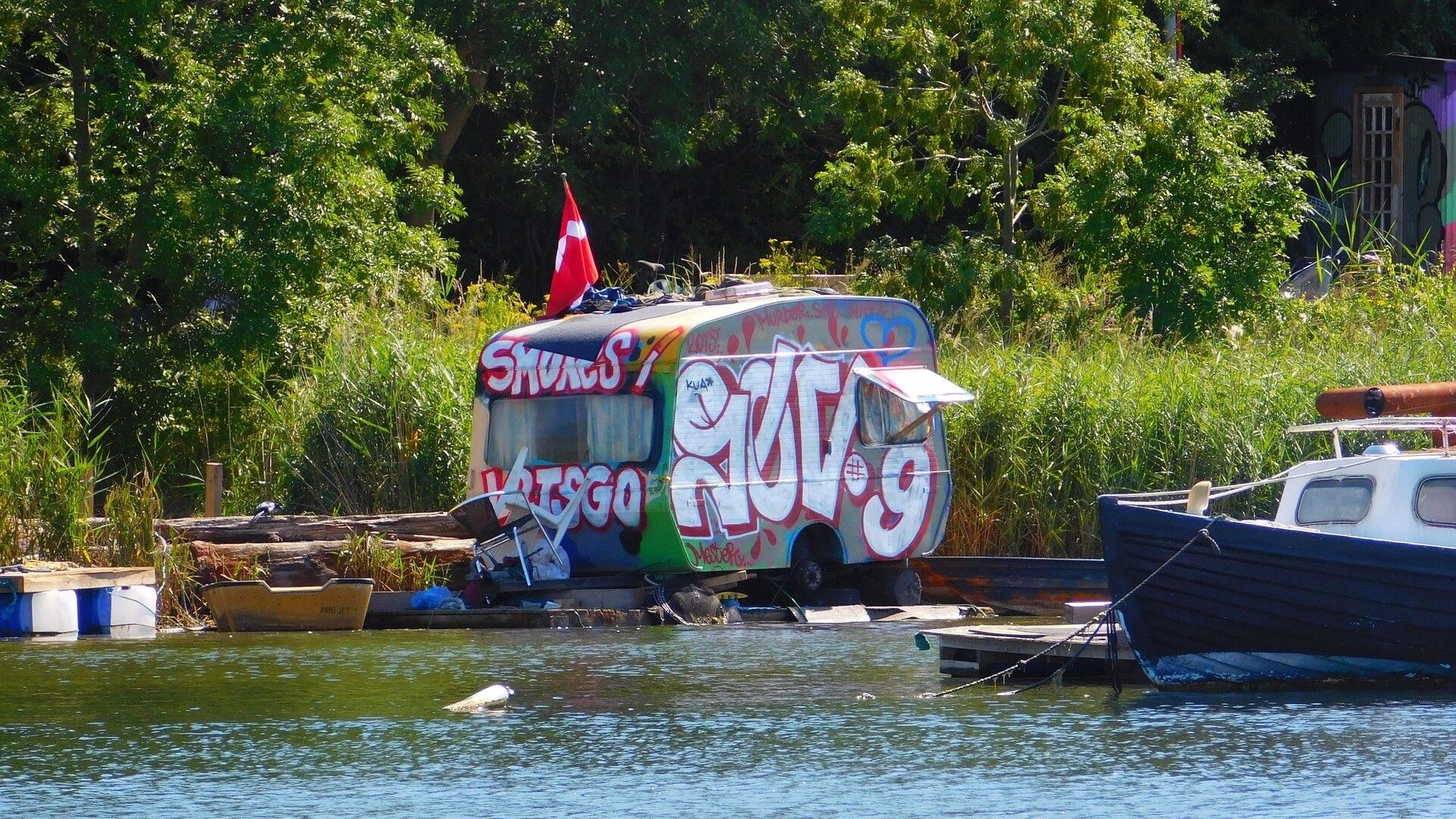https://sputnikglobe.com/20220719/denmark-razing-ghettos-to-get-more-mixed-population-in-huge-experiment-1097443757.html
Denmark Razing Ghettos to Get More Mixed Population in 'Huge Experiment'
Denmark Razing Ghettos to Get More Mixed Population in 'Huge Experiment'
Sputnik International
Over the past decade, Denmark has gradually been hardening its immigration and housing laws through restrictions and tougher integration measures, well as... 19.07.2022, Sputnik International
2022-07-19T07:02+0000
2022-07-19T07:02+0000
2022-07-19T07:02+0000
scandinavia
newsfeed
denmark
ghettos
immigration
https://cdn1.img.sputnikglobe.com/img/107549/92/1075499294_0:23:1920:1103_1920x0_80_0_0_a2d6fbd6138ba903a3ceacf80d283902.jpg
The Danish government has launched a program to rid the country of parallel societies, formerly referred to as ghettos, in order to combat segregation and create a more amalgamated population, Swedish national broadcaster SVT reported. The program has been referred to as a “huge housing experiment” by experts and involves, among other tactics, forcible eviction.The goal initially formulated by the previous government and endorsed by the ruling Social Democrats is to create socially mixed areas by 2030 through a combination of means, including demolition, new construction and stricter rules for who can live there.In Gellerupparken in Aarhus alone, one of the country's largest and most hardy parallel societies, almost 1,000 homes are up for demolition. So far, many of its 5,000 residents have been able to move within the area, whereas others who are forced to move will be offered an equivalent home in Aarhus.In 2018, the Danish parliament decided by a broad majority to rebuild 15 areas it viewed as “particularly vulnerable”, at that time referred to as “hard ghettos” but renamed after criticism. Several mayors were positive about the plan in 2018, but emphasized that more measures than demolition alone would be required.Having interviewed residents in all the designated areas slated for anti-ghetto treatment, Bech-Danielsen emphasized that there is great frustration over the government's rhetoric and forced relocations. He also pointed out that other countries have already undertaken such programs, yielding ambiguous results.“There is no unequivocal evidence that this will help individuals, but it will certainly create new districts. Whether it helps the vulnerable individuals, we may not know until ten years from now. It is a huge social housing experiment that has been launched in Denmark,” he concluded.Over the past decade, Denmark has been gradually tightening the screws on its immigration laws, with several consecutive governments representing both the '"blue” center-right and the “red” center-left blocs, including the ruling Social Democrats, backing restrictions and tougher integration measures.In 2018, a new batch of laws was drafted to prevent immigrants from cramming into certain residential areas. Subsequent measures included a cap on residents with a non-Western background. However, the law package sparked controversy and warnings of ethnic discrimination from the UN, as it stipulated, among others, stricter penalties and slashed benefits for residents in these areas.In order to be classified as a ghetto, or parallel society, to use the more up-to-date term, a housing area must meet certain criteria involving ethnic background, employment status, and income. Housing areas must have over 1,000 residents, of which over 50 percent have non-Western nationality or heritage, and fulfil two out of four criteria pertaining to the proportion of residents who are unemployed and aren't pursuing an education, have criminal convictions involving arms or drugs, are low income, and lastly, have a basic school education or less.In 2021, the official Ghetto List was renamed the Parallel Societies List. Immigrants make up 8 percent of Denmark's population of 5.8 million.
https://sputnikglobe.com/20220420/denmark-eyes-sending-migrants-to-rwanda-in-uk-like-deal-1094921710.html
scandinavia
denmark
Sputnik International
feedback@sputniknews.com
+74956456601
MIA „Rossiya Segodnya“
2022
News
en_EN
Sputnik International
feedback@sputniknews.com
+74956456601
MIA „Rossiya Segodnya“
Sputnik International
feedback@sputniknews.com
+74956456601
MIA „Rossiya Segodnya“
scandinavia, newsfeed, denmark, ghettos, immigration
scandinavia, newsfeed, denmark, ghettos, immigration
Denmark Razing Ghettos to Get More Mixed Population in 'Huge Experiment'
Over the past decade, Denmark has gradually been hardening its immigration and housing laws through restrictions and tougher integration measures, well as legal barriers devised to prevent immigrants from clustering together.
The Danish government has launched a program to rid the country of parallel societies, formerly referred to as ghettos, in order to combat segregation and create a more amalgamated population, Swedish national broadcaster SVT
reported. The program has been referred to as a “huge housing experiment” by experts and involves, among other tactics, forcible eviction.
The goal initially formulated by the previous government and endorsed by the ruling Social Democrats is to create socially mixed areas by 2030 through a combination of means, including demolition, new construction and stricter rules for who can live there.
In Gellerupparken in Aarhus alone, one of the country's largest and most hardy parallel societies, almost 1,000 homes are up for demolition. So far, many of its 5,000 residents have been able to move within the area, whereas others who are forced to move will be offered an equivalent home in Aarhus.
In 2018, the Danish parliament decided by a broad majority to rebuild 15 areas it viewed as “particularly vulnerable”, at that time referred to as “hard ghettos” but renamed after criticism. Several mayors were positive about the plan in 2018, but emphasized that more measures than demolition alone would be required.
“The agreement requires drastic changes in these areas that were once pointed out as hard ghettos,” Claus Bech-Danielsen, a professor of architecture and physical planning at Aalborg University, who is in charge of evaluating the agreement over a ten-year span, told Swedish broadcaster SVT.
Having interviewed residents in all the designated areas slated for anti-ghetto treatment, Bech-Danielsen emphasized that there is great frustration over the government's rhetoric and forced relocations. He also pointed out that other countries have already undertaken such programs, yielding ambiguous results.
“There is no unequivocal evidence that this will help individuals, but it will certainly create new districts. Whether it helps the vulnerable individuals, we may not know until ten years from now. It is a huge social housing experiment that has been launched in Denmark,” he concluded.
Over the past decade, Denmark has been gradually tightening the screws on its immigration laws, with several consecutive governments representing both the '"blue” center-right and the “red” center-left blocs, including the ruling Social Democrats, backing restrictions and tougher integration measures.
In 2018, a new batch of laws was drafted to prevent immigrants from cramming into certain residential areas. Subsequent measures included a cap on residents with a non-Western background. However, the law package sparked controversy and warnings of ethnic discrimination from the UN, as it stipulated, among others, stricter penalties and slashed benefits for residents in these areas.
In order to be classified as a ghetto, or parallel society, to use the more up-to-date term, a housing area must meet certain criteria involving ethnic background, employment status, and income. Housing areas must have over 1,000 residents, of which over 50 percent have non-Western nationality or heritage, and fulfil two out of four criteria pertaining to the proportion of residents who are unemployed and aren't pursuing an education, have criminal convictions involving arms or drugs, are low income, and lastly, have a basic school education or less.
In 2021, the official Ghetto List was renamed the Parallel Societies List. Immigrants make up 8 percent of Denmark's population of 5.8 million.


